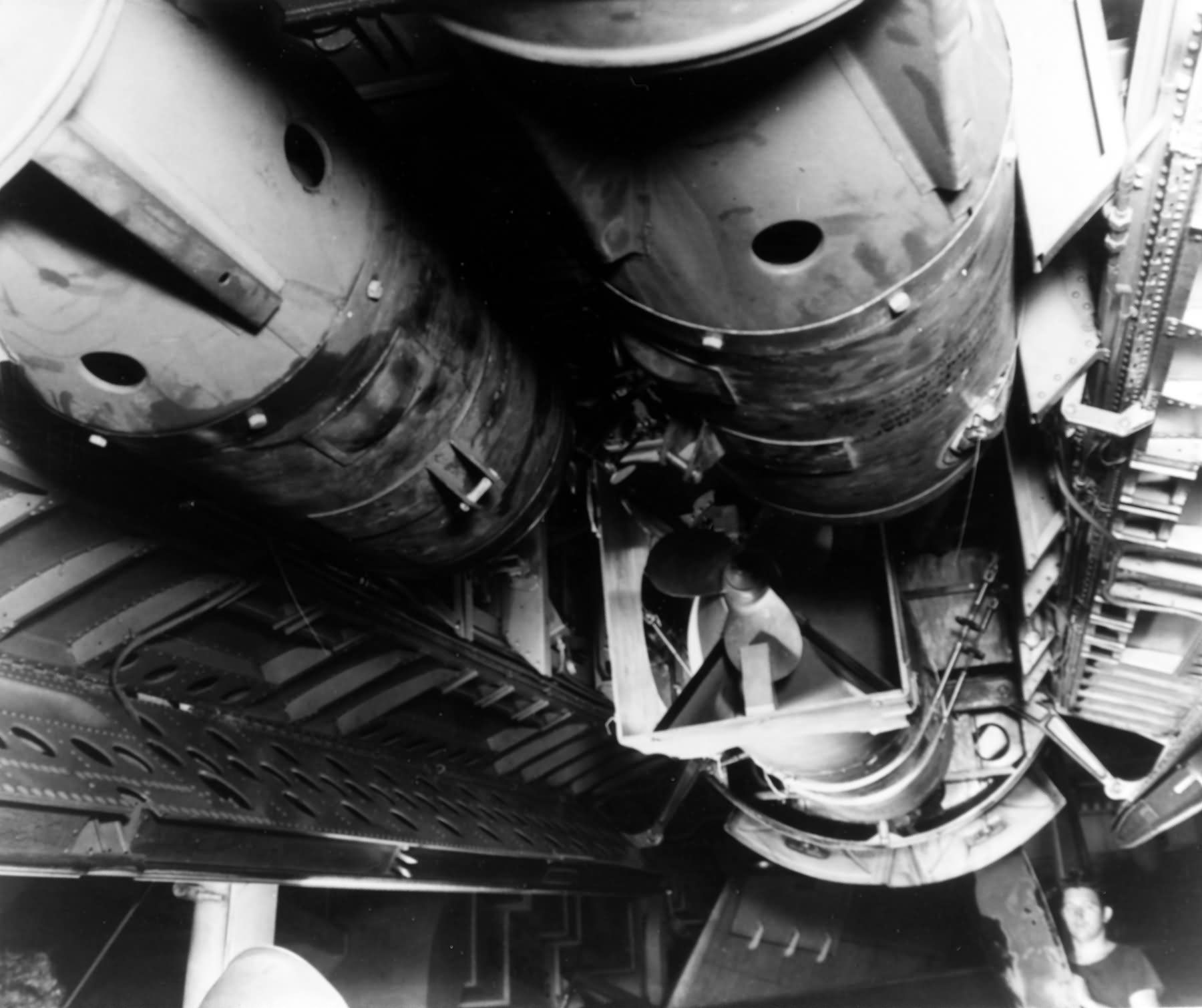The Mk. 24 acoustic homing torpedo, known as “FIDO,” marked a significant advancement in torpedo technology during World War II. Its introduction addressed the growing Axis submarine threat, particularly in the Atlantic, where German U-boats posed a major danger to Allied shipping. FIDO was developed out of necessity, and its rapid design and deployment—just 18 months from concept to service—highlighted its importance in the war effort.
Key Features of the Mk. 24 “FIDO” Torpedo:
Acoustic Homing Technology: FIDO was revolutionary because it could home in on the sound produced by enemy submarines. Using hydrophones, it tracked the loudest sound signals in the vicinity, which typically came from the engines or propellers of submarines. This “homing” capability greatly increased the chances of hitting submerged submarines, as traditional torpedoes relied on straight-line trajectories and visual guidance.
Compact and Versatile: The Mk. 24 was designed to be compatible with the 1,000 lb bomb racks used on aircraft. It could be deployed from an altitude of 200 feet and at speeds of up to 120 knots, allowing aircraft to release the torpedo in realistic combat conditions without having to reduce speed or fly at dangerously low altitudes. This made FIDO ideal for anti-submarine warfare (ASW) missions, particularly for aircraft like the TBF Avenger and PBY Catalina that hunted submarines.
Safeguards Against Friendly Ships: One of FIDO’s innovative features was a safety mechanism that prevented it from targeting Allied surface vessels. If the torpedo rose too close to the surface, the acoustic homing device would disengage, preventing accidental hits on friendly ships. However, despite this safeguard, FIDO still had challenges distinguishing between the sounds of Allied ships and Axis submarines. As a result, it was used cautiously when friendly ships were present during ASW operations.
Effectiveness: FIDO proved to be highly effective against submarines. It could track submerged targets, making it a game-changer for the Allies, who had previously struggled with neutralizing U-boats once they submerged. FIDO’s homing ability meant that even if a submarine attempted evasive maneuvers, the torpedo could adjust its course to follow and strike the target. This led to significant successes in the Battle of the Atlantic, as the Allies gradually gained the upper hand against German U-boats.
The Mk. 24 “FIDO” torpedo played a critical role in shifting the balance of power in the war at sea. Its ability to target submerged submarines, combined with its versatility for aircraft deployment, made it a vital tool in the Allied anti-submarine campaign. While it had limitations in distinguishing between friendly and enemy vessels, its successes far outweighed these challenges, marking it as a significant wartime innovation.
